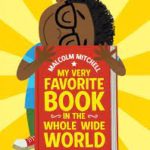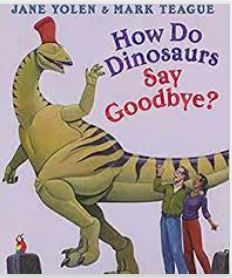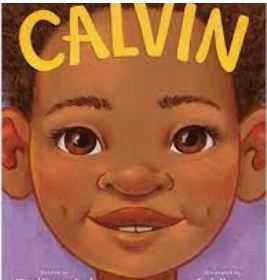It’s a sweet story, told mostly in pictures, with limited, repeated text. When a young bear asks his mom to make blueberry cake, she points out that they need blueberries. He sets out very excitedly and finds and picks and eats blueberries, until he is distracted by a butterfly to a field of flowers, which he picks to fill his bucket. Upon returning home, he asks his mom again about blueberry cake, but when she asks again about blueberries, he has only flowers to offer. The next morning he rises early, picks blueberries, and leaves the bucket full for his mother to find, and they enjoy their blueberry cake together alongside a beautiful bouquet, until he asks about applesauce… Its simplicity makes it great for emergent readers, and in particular, the way the same words are used with varying punctuation makes it great for teaching about punctuation and context as clues for reading with expression.
Beautifully Me
I love the illustrations in this book: they are bright and beautiful and full of feeling. And I love the idea/purpose guiding the book: it’s about being comfortable in your own skin and not body shaming ourselves. I just didn’t like the story as much as I wanted to: it came across as rather preachy and pedantic. It is about a young Bangladeshi-American girl who is excited and confident about starting school for the first time, but is questioning comments she hears her family members make about their weight. At school she hears a boy tease another girl about looking fat. That night at dinner she puts all the pieces together and declares herself on a diet, turning down her favorite dinner. Her family gathers around her and explain their own mistaken thinkings and her mother tells her that “beauty is how you make people feel and the kind things you do,” and then all is right with the world again. I just wish it had been more subtle with more story and less preaching. It’s an important message, but it was delivered in too heavily handed a manner.
Fuzzy, Inside and Out: A Story About Small Acts of Kindness and BIG HAIR by Zachariah Ohora
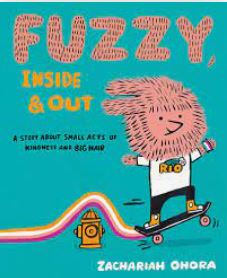
Fuzzy Haskins is a kind soul who is super fuzzy. He smiled at everyone he passed on the street. He helped others when he saw a need. But when the rain and humidity came smiles around him turned into frowns. He became too fuzzy! This is a lovely book about being kind to others. This is a great book that talks about the positive feelings one can have when they share and are kind to others.
Outer Banks: Lights Out
Outer Banks is a multi-season Netflix series that is pretty popular amongst teens. This original novel has the same setting and main characters, but the plot for this book is different. Told in multiple POVs, these two and a half days of John B and JJ’s spring break solidifies their hatred of the Kooks. Kooks are the tourists that flood their North Carolina coastal town. John B and JJ want to escape the Kooks and their dad-issues –John B’s dad has been missing for months and presumed dead while JJ’s is an alcoholic. The plan is for them to go fishing in the “Graveyard of the Atlantic”, a Bermuda Triangle of sorts. When the weather turns nasty, their night becomes dangerous. The diction is over-the-top in simplicity — it’s a fast read that fans of Outer Banks will probably enjoy but those without the background might be frustrated with the low quality. While this reader fully expected the story to end on a cliffhanger, which would seem appropriate, it ties up too easily, which does not match the drama in these teens’ lives. This is a recommendation that will be checked out again and again as long as the series continues but it is not one for the history books.
How Do Dinosaurs Say Goodbye? by Jane Yolen, Mark Teague – Illustrator
Calvin by JR and Vanessa Ford, Kayla Harren, Illustrator
I Don’t Want to Read This Book
I Don’t Want to Read This Book by Max Greenfield starts off with the narrator declaring that they do not want to read this book. Books are full of words, sentences, and paragraphs. On each page, the narrator explains why they do not want to read the book. Even at the end of the book the narrator the narrator says the changes of reading the book again are infinitesimal.
Bisa’s Carnaval
Bisa’s Carnaval by Joana Pastro is a delightful picture book about Clara who is so excited to celebrate her favorite holiday, Carnaval, with her family. Her Bisa (great-grandma) helps Clara make her costume for the parade, but says she is too old to take part in the parade. Clara decides to take the parade to her Bisa.
The vibrancy of the illustrations and the different font sizes bring the feeling of excitement and joy of the Carnaval to the reader. The author and illustrator note’s at the end give personal perspective to Carnaval and the glossary at the end translates some of the Brazilian Portuguese words.
The Barking Ballad: A Bark-Along Meow-Along Book
The Barking Ballad by Julie Paschkis is an interactive picture book. The author has used a stanza from Oliver Goldsmith’s poem “An Elegy on the Death of a Mad Dog” to build her own poem. The book starts out with a cat that was left behind when someone moved away and she is wandering around alone and hungry. One day a dog is hit on the head by a falling rock and the cat takes care of the dog. Soon the cat and the dog are friends and are inseparable.
Throughout the book, the reader will find red dots which mean the readers should bark and yellow diamonds which mean the reader should meow. In a read-aloud, the reader would need to figure out a way to demonstrate when the audience should bark or meow. This book is geared towards pre-readers but there is some vocabulary that would need to be defined for them (bereft).
Earth’s Aquarium: Discover 15 Real-Life Water Worlds
By Alexander Kaufman; illustrated by Mariana Rodrigues
This oversized book is both beautiful and informative. This book begins with the important aspects of many watery worlds and defines each: salinity, density, light penetration, currents, pressure, waves, water acidity, and tides & oxygen concentration. 15 different water ecosystems are highlighted from all parts of the planet. Within each, 8-10 species are illustrated and discussed, as well as the importance of each unique type of watery ecosystem. Each ecosystem features a two-page spread of the ecosystem “in action” followed by 2 pages of information about specific species. While the reader may never see the fast-moving freshwater of the Amazon River in South America, they can certainly see similar ecosystems near their own homes. The illustrations are gorgeous and are worthy of time spent just swimming around the pages. This book would be a great addition to a science class involved in water quality testing or any school library where water issues are studied. This is a highly recommended picture book for older audiences since the text is geared toward older students!

What About Will
By ELLEN HOPKINS
While Trace used to have a close relationship with his older brother, Will, everything changes after Will suffers a serious brain injury in a football game. “The incident” has a permanent effect on Will’s personality. He now skips school, hangs out with the wrong crowd, steals money, and eventually becomes addicted to pain medication. Trace, already juggling his parent’s separation and pitching for his school baseball team, hides what he knows about Will from their father. When Will attempts suicide, Trace learns the hard way that the best way he can help his brother is to be open with his parents about the direction Will’s life is taking him. The author, Ellen Hopkins writes this story of family love in prose, the perfect format for the storyline.
The New Friend, by Charlotte Zolotow
Originally published in 1968, the story of The New Friend remains true to the experiences of childhood today. Newly illustrated by Benjamin Chaud, Zolotow’s story begins with a celebration of all the things both mundane and imaginative that a boy and his friend with long brown hair do together. When the girl with the long brown hair finds a new best friend with whom to share all her experiences, the child is devastated and rushes home in tears. In his dreams that night he finds a new friend to share those mundane and imaginative experiences of childhood. Upon waking he is determined to find a new friend so that when he thinks of his old friend, he will no longer care.
Nerdycorn by Andrew Root
Fern isn’t like other unicorns. She’s not interested in glitter, rainbows, or parties. She would much rather spend her day laboratory working on math, chemistry, engineering, or programming. She is always willing to help others but even while she went out of her way to do things for others, they teased her and called her names. Finally, she had enough and decided to no longer fix things for all the unicorns who had been unkind. She feels justified in her decision, but eventually decides to step in to save the Sparkle Dance because being smart, a good friend, and helping others is more important than holding a grudge. The other unicorns were so impressed they apologized for their teasing and asked Fern to teach them.
Nerdycorn features a strong female character who enjoys and excels in math and science. Fern demonstrates a willingness to be true to herself even in the face of teasing and as a result is able to accomplish much. Through Fern’s perseverance, the other unicorns come to appreciate the benefits of STEM learning.
Muddle School
Based on Dave’s own middle school experiences, the main character, Dave, moves to a new middle school and has to start all over trying to establish his “cool-factor”. He is not very successful initially. Eventually, he and a science lab partner build a time machine and he tests it out. The results allow him to learn from his mistakes and get a do-over – sort of. Poignant and real, students will be able to relate to many of Dave’s experiences and will perhaps find ways out of their own struggles. I did find the exaggerated leadership trophy scene a bit over-the-top, but liked the subtle empathy he finds in the parking lot afterwards. Illustrations are all in calm, neutral blue tones, but the drawings are full of energy and humor. I also liked the occasional page that appears to be doodles on notebook paper. Included at the end is a short author biography that draws comparisons between the fictional Dave and the real one. Overall, a solid, must-have in a middle school library.

Our Table
Violet remembers when her family used to sit around the table sharing about their day and making memories. Now her family is distracted by other things and has been too busy to sit around the table. One day Violet notices that her table is beginning to shrink until it disappears completely. How can Violet get her family back to spending time together?
This picture book by Peter H. Reynolds is beautifully illustrated. The scenes where her family are together and connected are in full color. The scenes where they are distracted and isolated are illustrated only in purple. This story would resonate with many readers as we become distracted by technology and busy with life and may lose some connection with each other.

Little Mermaid: (Or, How to Find Love Underwater)
This two-sided book is no Disney version of the Little Mermaid. On one side of the book the reader will find the 1930s translation of the original Hans Christian Anderson story. (Spoiler: a very different sort of “happily ever after” ending in the original!) The flip side of the book is a blackout poem of the original story that modifies the ending to one of female empowerment. The pages are lovely with simple designs in addition to the blacked out parts. The poem reads like poetry magnets on the page. The complete poem is also included outside of the blacked out pages. If a teacher were teaching blackout poetry, this would be a perfect book to demonstrate how it can be done – beyond just crossing out the parts one didn’t want. In the author’s note, she speaks of finding our own story in another – of creating a new version that speaks your truth. I thought this was a lovely little book. It was interesting to read the original version and delightful to see the “hidden” story beneath the surface.

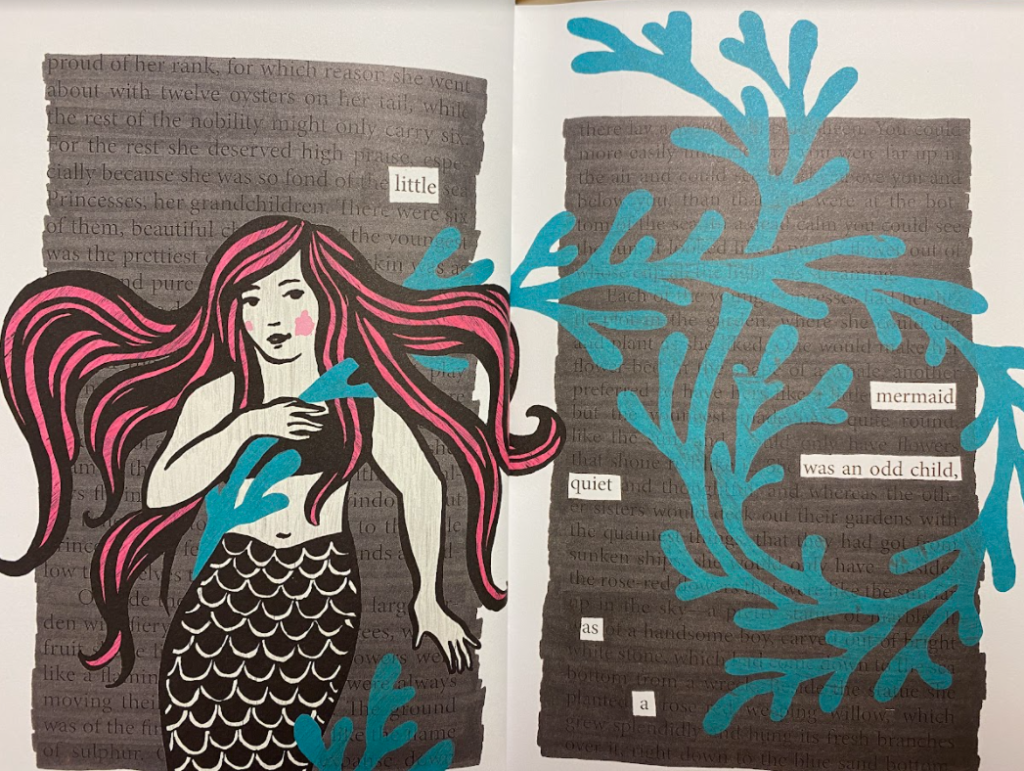
Bend in the Road by: Sara Biren
This is a sweet romance set on a small town farm, between a home-town farm girl and long-lost Rockstar friend. The story is a pretty typical enemies to lovers tale – boy comes “home” to recover from one of many fame scandals; he’s in dire need of money, so selling the farm seems like the best option. Girl makes it her mission to treat the boy with “honey” in order to keep him from selling her home. There are many familial ties between the two, making the situation more complicated. Along the way the characters bicker, disagree, form a true friendship and an eventually romantic love. This story is very sweet – appropriate for ages 12+. Anyone looking for a warm, feel good read will enjoy this.

Ground Zero by Alan Gratz
Set in the past and the present, this realistic/historical fiction book is based on the events surrounding the 9/11 attack on the World Trade Center in New York. Brandon is a young man who has gotten into trouble at school and thus, is visiting his father who works at the World Trade Center. When the attack occurs, Brandon is put into an obvious life or death situation. In an alternate storyline, Reshmina has grown up in war torn Afghanistan all of her life. She is a dreamer of peace but knows the reality that young men have when they must make the decision to be with the Taliban or not. These two storylines intertwine into a wonderful book where the present and history intersect. Readers will read not only the terrifying events as they occurred in New York on September 11, 2001 but also the effects of the United States being at war in Afghanistan to the normal everyday individual living through it.It is remarkable how Alan Gratz writes thought provoking literature for youth that will open the eyes of many. I highly recommend this book.
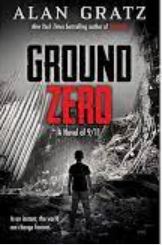
When Langston Dances
The picture book When Langston Dances by Kaija Langley is a celebration of movement and color with Keith Mallett’s illustrations seeming to come alive with every page turn. Langston is a young black boy who liked basketball, but fell in love with ballet when his mom took him to see the Alvin Ailey Dance Company. As we watch him leap, dip, kick, and spin on his way to his first dance lesson, his joy is contagious. Mallett is a master of making each person a distinct individual with all different skin tones, head shapes, hair, and even age lines. On his way to ballet class Langston notices other classes for tap, hip-hop, and African dance. Each one is populated with diverse students.
This book will make you want to start dancing right off the couch. Highly recommended.
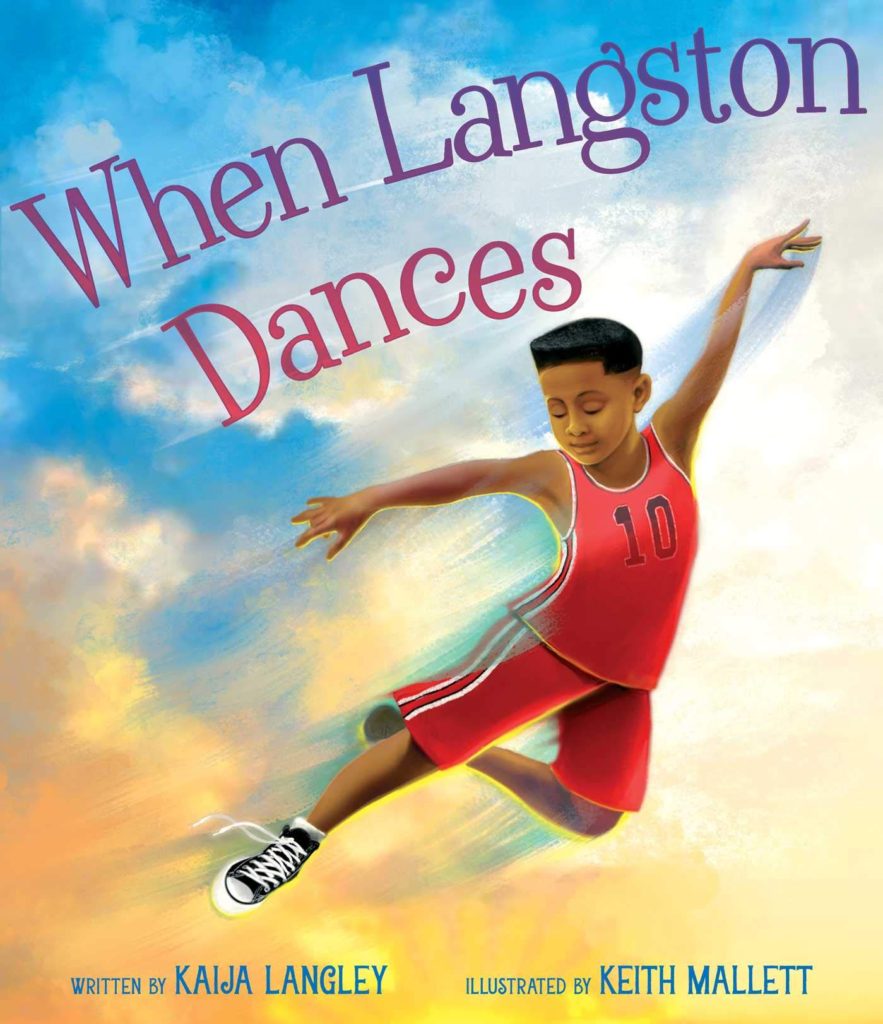
Once Upon a Camel
A camel with a penchant for alliteration? A worried mother Kestrel falcon trapped inside a tangled tumbleweed? Two baby Kestrels escaping a gigantic dust storm riding on the head of said camel? You will encounter all of these, plus engaging historic fiction in Kathi Appelt’s Once Upon a Camel. The reader is drawn in by the idea of a camel named Zada living in the desert of Texas. The chicks must ride to safety as they are not old enough to fly. Their parents have been blown away by the storm, so they are understandably anxious. Zada provides distraction by telling them her life story. The novel goes back and forth between Zada’s stories and surviving the haboob.
Through Zada’s stories the reader gains a peek into the Middle East of the 19th century: the world of camel racing, the great wealth and power of the Pasha, the elaborate palaces. As the setting will be new for most children, there will be the excitement of discovery. It will help readers on the important journey of gaining perspectives outside of their own and building empathy. Appelt’s work gives young readers access without bogging them down with too much historical information, because we learn through the eyes of a camel.
Each character is well developed. She always adds a dash of humor. The squabbling baby birds ring true for anyone who has a sibling. Take my word that Zada’s concern about her diminishing physical capabilities as she ages is also right on the mark as I found myself nodding and smiling. Mother Kestrel Perlita’s tendency to get over excited and bossy, especially when it comes to her babies, is humorous and heartwarming. The disdain the camels have for the vain, delicate horses and their certainty of the need and satisfaction of spitting made me laugh.
The way the death of a loved one is depicted is both sad and beautiful. Her conclusion is surprising and unpredictable, but ultimately very satisfying. Keep the tissues handy. This title is highly recommended for upper elementary readers.
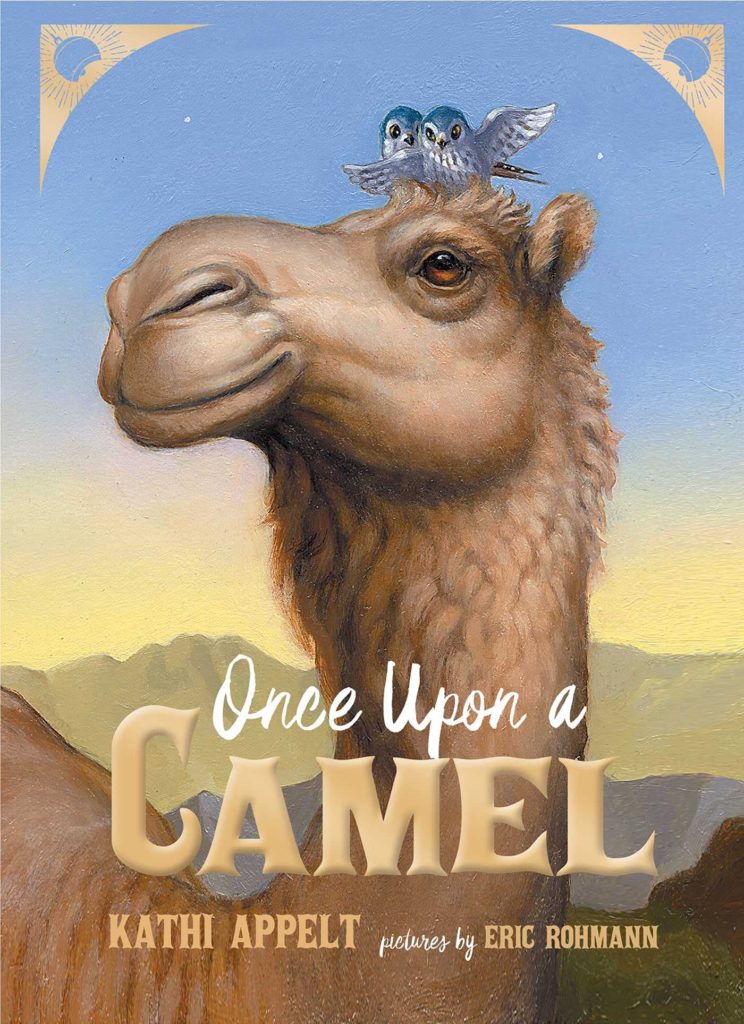
Be a Tree! written by Maria Gianferrari, illustrated by Felicita Sala
Beautifully illustrated, beautifully written is this book comparing our bodies to a tree. Written in poetic lyrical prose, as one long beautiful piece. comparisons include our spines to a trunk of a tree, our heads as the crown of the trees, and underneath the sapwood carrying nutrients to all other parts.
This story would make an inspirational read before a poetry unit, tree unit of study, health/wellbeing, or mindfulness/metal health and self esteem. It would weave nicely into an asana or movement practice. Also, skills such as compare/contrast and descriptive writing lessons.
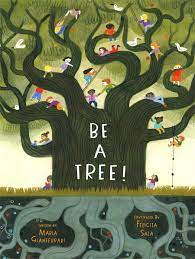
It Fell From the Sky
By The Fan Brothers
One day, a beautiful sphere fell from the sky into the grass and the insects marveled at the object. This is another home run book by the Fan Brothers. Not only are the illustrations top notch, but the story of Wonder, friendship, and greed is a simple and sweet tale as well. In this story, a marble falls to the ground and the friends are taking guesses at what it is. Spider comes up with the brilliant idea of charging everyone to see the Wonder. It is a great plan at first, but before he knows it business has slowed and all his friends have left him. Did he choose greed over friendship? Spider comes up with a plan that takes lots of patience to bring everyone back together. As his plan takes shape the illustrations become more and more colorful until the last few pages are in full color to fully communicate the joy of all the friends. Up until then the illustrations are all in black and white with the exceptions of the Wonder that fell from the sky (a cat eye marble) and the money (leaves) that Spider gets greedy over. The book is rated from ages 4-8, although any person who loves art will love this book.
Please don’t forget to check out under the dust jacket for a beautiful hardcover illustration.

The Circles All Around Us, by Brad Montague, illustrated by Kristi Montague.
This is a wonderfully written and illustrated book for primary aged children explaining healthy understanding of circles of people in our lives. Illuminating that we are in the center and those closest to us are immediate family, then extended family, then friends, community, ect. The story encourages inclusivity as we “widen” our circles to include more and more people. Our story ends with bringing it back to our first person (the reader) and the love they hold inside.

Standing on Her Shoulders, A Celebration of Women. Written by Monica Clark-Robinson, art by Laura Freeman.
Beautifully illustrated and highly inspirational book for girls, young women and elders, alike. Our story begins with a young African-American girl sitting at the table with her mother and grandmother (assumed). The older women begin to tell her the story of all the women who have come before her and the foundation they layed, the work they gave, the sacrifices made to create the world today as a better place for their children’s children. In poetic form, we go through the ages highlighting events in history or seeing famous faces as we work our way to the present time. This book honors the ancestors and history of women, family, and the land our nation was built upon. The ending of the book brings our story full circle after explaining that we are standing on the shoulders of women before us, with this simple question: Who Will Stand on YOURS?
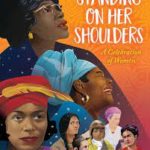
My Very Favorite Book in the Whole Wide World, by Malcolm Mitchell, illustrated by Michael Robertson
This story is about the typical child who cannot find a “good” book to read. They are certain it doesn’t exist. Until one day, something happens that changes everything….
Based on the true story of Malcolm Mitchell, Super Bowl champion, as he struggled with finding his love for books. As a young child his teacher’s homework assignment was to bring to school his favorite book in the whole world. Malcolm’s feelings about books weren’t very good. As a matter of fact, he would rather be playing. He had tried reading books before but found that they lacked action, had too big of words, and was just too hard to do.
His mother tells him that the best stories are often found inside of ourselves so Malcolm is inspired to write and share his own book with the class. It was a hit! His classmates loved it and Malcolm finally found his love with a book. To this day, he loves reading.
